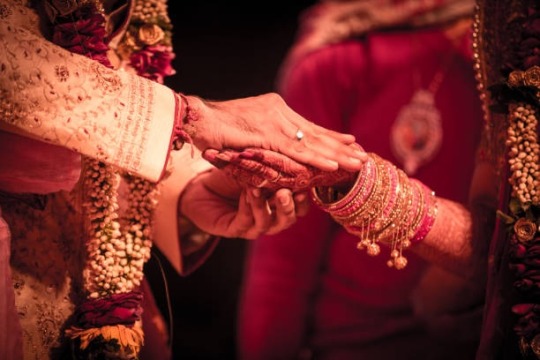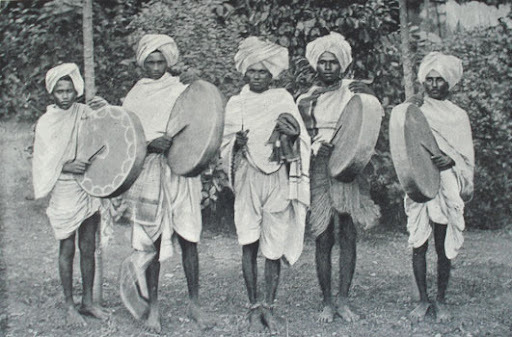#madiga
Text
this piece is written so well, reads just like a story, that i'm struggling on which excerpts to showcase for this post. please read the whole thing when you get the chance!
“They forbade us from feeding our own before we went to feed their children. They never prohibited us physically,” she said, her jaw clenched, adding that the fear they inculcated was enough for them to obey. “They didn’t want their children nursing from the breast of a woman who had just fed an untouchable child.”
Driving her stick farther into the ground, she added: “Sons of b******.”
“I was distressed about starving my child, but I always went along with it because that is how it worked,” Narsamma said. She would be compensated sporadically. “I was paid with a sack of grains or 10 or 20 paise [less than 1 cent].”
She looked around, before adding: “Soon as I reached their premises, I was provided with a piece of soap and was asked to take a bath near the cattle shed. Which human being would want to be treated that way? I left my baby starving in the house to feed their child. And while we slaved away our bodies for them, they saw it as nothing less than their birthright to treat us like that.”
...
The women began to speak about Madiga food habits and, in particular, eating beef.
Most Hindus who are not Dalits do not eat beef because cattle are considered sacred animals, but it is a staple food for many Dalit communities like mine.
For Madigas, meat from the dead cattle our community disposed of was often our only source of food, and we became associated with consuming beef. Non-Dalits have long humiliated people who eat beef by saying they are impure. But beef was not only an easy, protein-rich source of food for my community, it also played a significant role in our nutritional customs.
Such customs have faded as our community has tried to dissociate itself from a cultural practice that we were shamed for. The marginalisation of those who eat beef has only grown since 2014 after Prime Minister Narendra Modi’s government came to power and banned the slaughter of cattle in many states, fuelling the rise of violent vigilantism against beef-eating minorities.
Beef played a particular postpartum role for Madigas. “For about 12 days following childbirth, our elders made sure we ate a nutritious diet of a different assortment of beef parts every day,” Narsamma said. “The elders carefully chalked out every day’s diet to make sure we had the strength to sustain ourselves after giving birth and to produce sufficient nutritious milk for our babies. All the castes knew about this custom and hence had a popular opinion that our women produce nutritious milk.”
The sun had nearly set, and the women fanned themselves to keep the mosquitoes away. They would soon return home to tend to their families and the evening chores.
“They humiliated us as impure and dirty every day for eating beef, but they wanted the milk of the beef eaters,” Narsamma said. “They say we polluted the air they breathed, but they wanted our bodies to feed their children.”
#dalit#resources#intersectional feminism#bipoc#madiga#narendra modi#india#casteism#caste abolition#Ramavaram#Telangana#religion#hinduism#reaux speaks#dalit feminism
110 notes
·
View notes
Text
Madiga matrimony

Madiga matrimony is a matchmaking website for Madiga caste people. Madiga is a Hindu community predominantly found in Andhra Pradesh and Telangana. They speak Telugu. Eligible marriage seekers can register their biodata on a Madiga matrimonial website to find a suitable match within the Madiga community. Community based matrimonial websites are popular in caste prevalent India.
0 notes
Text
It is true that communists including Maoists, refused to recognise caste-based oppression for long and emphasised the concept of the class enemy, but it is sheer fantasy to assume that the Naxalite movement recreated caste hierarchy in its organisational structures. Naxalites were not mainstream political parties with headquarters located in cities in large buildings. Naxalites had to run for their lives and were never stationed in one place for more than a few hours. Where then did they have lavatories to clean? Many times, Naxalites lived on food given by sympathetic villagers and tribal communities. Accusing them of using the services of barbers and washermen is a sheer lie. Moreover, in the post-1969 Telangana movement, the Naxalite or People’s War Group was built in Telangana villages by addressing the issue of untouchability, especially the two-glass system where untouchables Malas and Madigas in villages were not allowed to drink from the glasses meant for touchable castes. Glassses hung in a basket outside the tea shop and Malas and Madigas had to stand outside the tea shop and plead with a touchable caste person to pour tea without touching them. After drinking tea, they had to wash their own glasses and place them in the basket.
Before they emerged as Naxalites, most Dalit youth in villages who studied in social welfare hostels were organised into Ambedkar Youth Clubs which fought to end the two-glass system, the right to access to village ponds for drinking water and the right to walk on the main roads. I know countless Dalit youth who left their studies, joined the Naxalites and rose to become important leaders. So, Gidla’s accusation against Naxalites is not only unfounded but is also a misrepresentation of facts on the ground.
— How Not to Write a Dalit Memoir
12 notes
·
View notes
Text
Malas and Madigas
Context: The rivalry between the Malas and Madigas, sub-castes among the Scheduled Castes (SCs) in Telangana, has come to the fore yet again after political parties announced candidates for the general elections.
About Mala and Madiga
Madiga:
The Madiga community is a Telugu caste, mainly living in the southern states of Telangana, Andhra Pradesh, and Karnataka. However, they also live in…

View On WordPress
0 notes
Text
Maths play an important role in Karnataka, having followers in various castes, communities India News
New Delhi: Maths are religious institutions, many of which were established centuries ago. In Karnataka, there are thousands of large and small mathas followed by various castes and communities like Lingayats, Okkaligas, Kurubas, Valmikis, Nayaks and Madigas. Of these, Lingayats have more than a thousand Maths in Karnataka alone.
Nath Samparadya Kadari Math is located in Mangalore, Dakshina…
View On WordPress
0 notes
Text
Welcome to Kannada Matrimony by Sandhan Matrimony for Kannadigas, your destination for finding your life partner. Find your match among various Kannada communities such as Havyaka, Jain, Kshatriya, Kumbara, Madhva, Madiga, and others. We pride matrimonial services for unmarried, widowed, second marriage, and divorced profiles. Find profiles from Hindu, Muslim, Christian, and other religions.
Register FREE: https://www.sandhanmatrimony.com/matrimony/KannadaMarriageMatrimony Download the app: https://play.google.com/store/apps/details?id=com.sandhanmatrimony
#kannadamatrimony#sandhanmatrimony#matrimony#marriage#relationship#matrimonysite#matchmaking#kannadamarriagebureau
1 note
·
View note
Text
Sampark is Best NGO For Women In Bangalore
Sampark’s mission is to help vulnerable and poor people, especially women, to gain direct control over and improve their lives. This is achieved through educational interventions primarily aimed at increasing people’s income earning ability. Sampark is Best NGO For Women In Bangalore.
View More…https://sampark.org/
The Present Day Devadasi system: Sexual exploitation of women in the name of tradition
According to a one-man commission report constituted by the Government of Andhra Pradesh in 2013, there are about 4,50,000 devadasis spread across the country. The National Commission for Women (NCW), however, reported only 48,358 Devadasis in India (Kothari, et al. 2019). It is perceivably hard to enumerate the exact number of Devadasis in the country. One reason being that this outlawed practice is often kept under wraps for fear of stigma and legal action. Secondly, being an abolished practice, official agencies assume that the practice simply does not exist.
However, the truth is that even after the practice was abolished (on paper) in 1925, the devadasi dedication and practice continues to exist in parts of Andhra Pradesh, Telangana, Karnataka, Maharashtra, Goa and even Assam & Odisha.
The fall from Glory to Gory
In the context of the present day, the devadasi practice involves young girls of about 4 or 5 being “dedicated” to Goddess Yellamma. It basically makes the girl available for sex once she attains puberty, but denying her the right to marry. Once the dedicated girl attains puberty, she is given her first sexual partner. At such a tender age, the young dedicated girls are unaware of the laws protecting them and by the time they are in a position to do something about their predicament, they have already turned 30-35 years old. Once they are too old for their patrons, they become daily wage labourers on agricultural farms or even move to semi-urban areas to take up construction work, domestic work, sex work for survival.
Before the word Devadasi became synonymous to a sex worker, the Devadasis were at least privy to respect and equality where they had the choice to work and earn as performers in order to financially support their families. They were never economically dependent on their partners as they would earn gold and/or land as reward for their performances in royal and noble courts. However, when patronage from temples stopped, this agency was taken away, and after dedication many women were forced to enter sex work of some sort to make ends meet.
Caste Dynamics
Additionally, due to the centuries-old upper caste domination and the socio-economic marginalisation of the lower castes, this now changed facet of the Devadasi tradition soon found abode in the female members of the ‘lower’ communities of the society; usually Dalits and Bahujans, particularly from the Madiga and Valmiki castes. Almost all the devadasis of present day come from Scheduled Castes and Scheduled Tribes (SC/ST) communities.
Traditions making them more vulnerable to exploitation
Even though the words Devadasi and sex worker seem replaceable, the terms must not be used synonymously. Devadasis are, even today, different from sex workers. ‘Modern’ Devadasis usually maintain long-term sexual relationships with men, almost disguised as a socially sanctioned practice like marriage and depend on their ‘generous patronage’ (cash or kind) for financial support. Due to the religious association attached with Devadasis, they require this ‘ generous patronage’ from their sexual partners and are not, unlike sex workers, in a position to demand payment, negotiate, or refuse sexual services if the terms are not acceptable to them. Whatever little freedom that sex workers have, is not lent to Devadasis, making their position in society even more vulnerable. There is no stability and surety of how much and when the patron will pay. Additionally, the patrons may never take responsibility for the children born out of this relationship.
0 notes
Text
#BJP understands historic injustices faced by Madiga community : PM #Modi
0 notes
Text

Telangana 🇮🇳 We have decided that for social justice, our next CM will belong to a backward class.
We have also decided that in the upcoming days, we will also give justice to the #Madiga caste by providing a vertical quota. - Shri Amit Shah
Join Telegram for more 👇
http://t.me/peoplesmint
http://t.me/PeoplesMintIndia
http://t.me/PeoplesMintHindi
http://t.me/PeoplesMintLife
#AmitShahInTelangana #PeoplesMintPolitics #PeoplesMint #PoliticalNews #News #Telangana #SouthIndia #BJP #Politics #Election
0 notes
Text
Our steadfast priority is to end historical injustices against Madiga community: PM Modi
http://dlvr.it/SyjKzL @narendramodi
0 notes
Text
Russian Roulette
Juhyun, Bohyung, Boah, Narae, Jiwon
So what? So what? So what? Geumanhae
Taekhae Uh idaero gabeorimyeon naega neol
Hey baby seseul sel teni danggyeo Bang Bang Bang
Nae uneul siheomhae bol Time sijakhae
Duryeopji antamyeon geojitmal simjangi da meojeoga
Eochapi neo animyeon jugeogal naya
Ittan geon ittan geon naegen byeolgeo aniya
Apeun mam apeun mal
Deoneun uimi eopdan geu han madiga
Nae…
View On WordPress
0 notes
Text
Xulka Sucuudi Carabiya oo Karbaashay xulkii Argentine iyo Messi oo foorar garoonka kaga baxay!!
Xulka Sucuudi Carabiya oo Karbaashay xulkii Argentine iyo Messi oo foorar garoonka kaga baxay!!
Hargeisa(Haldoor News):-Xulka kubadda cagta waddanka Sucuudiga ayaa 2-1 ku garaacay dhiggooda xulka qaranka Argentine oo ka mid ahaa xulalka loo saadaalinayo koobkan adduunka in ay qaadaan.
Xiddigaha Saliim Al Dawsari iyo Saalax Al shahraani ayaa labada gool u dhaliyey Sucuudiga halka goolka madiga ah oo rigoore ahaa Messi haafka hore u dhaliyey Argentine.
Natiijada ciyaartan ka soo baxday ayaa…

View On WordPress
0 notes
Text
Since Satyamurthy’s life is enmeshed in communist and Maoist politics, it is important to understand the historical context which brought him there. Gidla’s presentation of Communist party politics and Satyamurthy’s involvement misrepresents and grossly ignores legendary Dalit figures who built the communist movement in Andhra. Even though Dalits remained invisible in the mainstream communist party histories and were a mere social base as labourers and workers. A perusal of Telugu newspapers from the 1930s to the late 1950s as also secret reports of the police department reveal that Dalits were the vanguards of the communist movement as political and cultural activists.
For example, Nambury Sreenivas Rao from Machilipatnam in Krishna district was a famous balladeer and organised Dalits and other marginalised sections. He travelled extensively. Inspired by his songs and performances, people in many villages looted the houses of landlords in Krishna, Guntur and Godavari districts. The Madras police department formed a special police battalion to capture him and failed. Only after independence was he jailed and released after he gave a written undertaking to disassociate himself from the Communist Party of India (CPI).
Bethala Yesudas, a Dalit Christian from Tenali, organised Dalit agricultural labourers as part of the communist movement. He was also considered an outlaw by the Madras government and arrested after independence. Even in Vijayawada and Gudivada, much before Satyamurthy’s time, Pakis, also known as Rellis (manual scavengers), were organised by Thupakula Simhachalam, a Paki himself, into the Municipal Workers Union under the Communist Party in Vijayawada. Simhachalam’s moving autobiography, Nenu Communistunetlaina: How Did I Become A Communist (1946), provides the history of political mobilisation of the Paki community and also narrates the mistreatment of the Paki community even by fellow untouchable Malas and Madigas in the Vijayawada and Gudivada areas. Surprisingly, without even a scant reference to Thupakula Simhachalam, Gidla eulogises Satyamurthy as the pioneer in organising Pakis in Vijayawada. This ahistorical portrayal of Dalit lives not only erases the real heroes but is a gross injustice to activists.
Gidla discusses Guntur Bapanayya, another communist leader who lived in the same Slatter Peta slum in Gudivada where Satyamurthy’s grandmother, Marthamma, bought a dwelling for them. Bapanayya was an elected member of the Madras Legislative Assembly and also general secretary of the Andhra Provincial Agricultural Labourers Association. Given the age of Satyamurthy at that time, Bapanayya would have been a source of inspiration to him as Bapanayya’s brother-in-law, Nancharayya, was a lifelong associate of Satyamurthy. In this context, by the time Satyamurthy came to Gudivada to study, the Communist Party already had roots among the Dalits and established leaders among them.
Satyamurthy walked into a canvas of communist politics led by Dalits in their respective spheres and radicalised Dalit communist activism. Gidla’s portrayal of Satyamurthy as the pioneer of communist mobilisation among Dalits, including Pakis, is factually inaccurate and tantamount to the erasure of history of Dalit activists who sacrificed their lives to emancipate their brethren. Even though caste Hindus monopolised visible positions of power within the CPI, the spade work was done by Dalit activists. In this way, the communist movement in the coastal Andhra districts was built on the backs of Dalits such as Nambury Srinivasa Rao, Bethala Yesudasu, Gunturu Bapanayya and Thupakula Simhachalam
— How Not to Write a Dalit Memoir
4 notes
·
View notes
Text
Prashant Bhushan Joins Congress' Bharat Jodo Yatra In Telangana
Prashant Bhushan Joins Congress’ Bharat Jodo Yatra In Telangana
The Bharat Jodo Yatra began on September 7 from Kanyakumari in Tamil Nadu.
Hyderabad:
Activist-lawyer Prashant Bhushan on Sunday joined the ‘Bharat Jodo Yatra’ led by Congress leader Rahul Gandhi on its 60th day in Telangana.
Manda Krishna Madiga, leader of Madiga Reservation Porata Samiti (MRPS), an outfit fighting for categorisation of SCs, also joined the rally which resumed this morning from…

View On WordPress
0 notes
Text
Prashant Bhushan joins Congress' Bharat Jodo Yatra in Telangana | India News - Times of India
Prashant Bhushan joins Congress’ Bharat Jodo Yatra in Telangana | India News – Times of India
HYDERABAD: Activist-lawyer Prashant Bhushan on Sunday joined the ‘Bharat Jodo Yatra‘ led by Congress leader Rahul Gandhi on its 60th day in Telangana. Manda Krishna Madiga, leader of Madiga Reservation Porata Samiti (MRPS), an outfit fighting for categorisation of SCs, also joined the rally which resumed this morning from Alladurg in Medak district, party sources said. “It is the 60th Day of…

View On WordPress
0 notes
